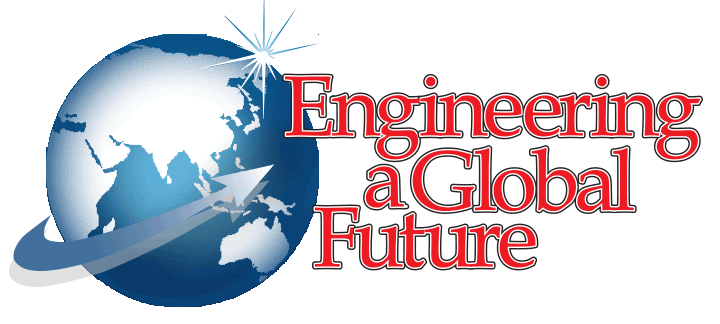Professor Achievements
Dr. Rui He
Dr. Rui He is an Associate Professor and the Ed and Linda Whitacre Faculty Fellow
of electrical and computer engineering in the Edward E. Whitacre Jr. College of Engineering
at Texas Tech University. Dr. He (the lead PI) and her collaborators, Dr. Liuyan Zhao
of the University of Michigan and Dr. Xiaofeng Qian of Texas A&M University, were
awarded an NSF grant for their project titled “Collaborative Research: Probing quasiparticle
excitations in TMDC Moiré superlatices for revealing and understanding novel two-dimensional
correlated phases.” The total project award is $762,450, with $257,821 for Dr. He.
This project probes correlated phases in moiré superlattices formed by stacking two
transition metal dichalcogenides atomic layers vertically. The focus is to investigate
the collective phonon, charge, and magnon excitations of correlated phases by using
an integrated optical spectroscopy experiment and first-principles theory method.
Dr. He's group conducts magneto-optical spectroscopy to study phonons, carrier-phonon
interactions, and spin wave excitations in this new type of artificial structures
made of simple and high-quality atomic crystals.
Dr. He's group at TTU has conducted pioneering research on Raman spectroscopy of layered
magnet Crl3, which is the first ever 2D material showing ferromagnetic order in its
monolayer limit. Their research findings have been published in leading scientific
journals, including Nature Physics (2022), Nature Communications (2022, 2020, 2018),
the Proceedings of the National Academy of Sciences (PNAS, 2020), ACS Nano (2021),
Nano Letters (2021), and Physical Review X (2020).
Dr. He's research interests include:
• Nano-Photonics
• Optical studies of nanostructures
• Raman spectroscopy of materials
Dr. Hongxing Jiang
Texas Tech University's Hongxing Jiang, a Horn Distinguished Professor, co-director
of the Center for Nanophotonics, and an Edward E. Whitacre Jr. Chair in the Department
of Electrical & Computer Engineering, within the Edward E. Whitacre Jr. College of
Engineering, was recently honored by the International SSL (Solid-State Lighting)
Alliance (ISA) with its Global SSL Award of Outstanding Achievements for his invention
of microsized light-emitting diodes, or microLED.
“It is my great pleasure and honor to receive this outstanding award,” Jiang said.
“From a vision and dream of more than 20 years ago, it is fascinating to see that
our original invention and development of microLED and microdisplay have led to such
worldwide research and development efforts in this technology.”
MicroLED was first proposed and realized in 2000 by Jiang and his wife Jingyu Lin,
a Horn Distinguished Professor, Linda F. Whitacre Chair in the Department of Electrical
& Computer Engineering, and co-director of the Center for Nanophotonics.
MicroLEDs and microdisplays have important applications in large, flat-panel displays
with extremely high brightness and contrast, as already being demonstrated by companies
including Sony and Samsung; in optical communications such as Li-Fi, a wireless communication
technology that utilizes visible light to transmit data and position between devices;
in medical and health for optogenetics and neuroscience; and in entertainment for
augmented reality (AR), virtual reality (VR) and 3D displays
with high resolution and high speed.
Jiang received the award jointly with Martin Dawson, the director of research in the
Institute of Photonics at the University of Strathclyde in Glasgow, Scotland. Previous
winners of this award include a Nobel laureate in Physics and recipients of the National
Medal of Science and National Medal of Technology awards.
The International SSL Alliance (ISA) is a not-for-profit nongovernmental organization
that operates as an independent legal entity to enhance public-private partnership
and intensify global cooperation to accelerate and foster the sustainable development
of SSL. It is an international alliance of regional alliances and associations, renowned
universities and institutions and leading companies in the SSL field.
“From a vision and dream of more than 20 years ago, it is fascinating to see that
our original invention and development of microLED and microdisplay have led to such
worldwide research and development efforts in this technology.”
Dr. Hongxing Jiang
Dr. Ravindra Joshi
Professor Ravindra Joshi of Texas Tech's Electrical and Computer Engineering Department
was selected as the William G. Dunbar Award recipient in April 2022. This award was
first established at the 1982 High Voltage Workshop as the ″High Voltage Award,” and
was renamed in 2002 to commemorate William G. Dunbar's lifetime of contributions to
high voltage technology and his leadership in the High Voltage Workshops. The Dunbar
Award is intended to recognize individuals for continuing contributions to high voltage
research, development, or testing technology and for transferring that technology
to the engineering and scientific community. Dr. Joshi was selected “For contributions
to the science of electrical breakdown of liquids and biological applications of pulsed
high voltage.″
Joshi also co-authored a new book titled, “Ultrashort Electric Pulse Effects in Biology
and Medicine” published by Springer Nature. This book presents an overview of the
current state of research on ultrashort electric field pulses of high intensity and
their use in biology and medicine. It examines, in detail, the most recent and exciting
advances in how nanosecond and picosecond electric pulses research has grown and expanded
into new areas of bioengineering. Further, the book specifically focuses on electric
pulses in the time domain, on intracellular effects as opposed to plasma membrane
electroporation, and highlights the many bio-medical applications of these unique
pulse effects. Some examples include electro-chemotherapy, possible wound healing,
electrically activated calcium signaling, and possible immunotherapy. The authors
initiated the unique exploration of ultrashort pulsed effects in biology and these
perspectives foreshadowed directions that this research took, expanding into new areas
that continue to be investigated.
Dr. Joshi's research interests include:
• Pulsed Power and High Power Microwaves
• High Field Transport and Semiconductor Modeling
• Electrophysics
• Bio-electrics
Dr. Sangsik Kim
Dr. Sangsik Kim is an Assistant Professor of electrical and computer engineering in
the Edward E. Whitacre Jr. College of Engineering at Texas Tech University. He received
a $500,000 grant from the Faculty Early Career Development Program (CAREER) Award
given by the National Science Foundation (NSF) for his project, “Scalable Integrated
Nanophotonics with subwavelength Gratings.”
Photonic integrated circuits (PIC) have innovated a wide range of optical applications,
including quantum processing, biochemical sensing, and light detection and ranging
(LiDAR). As electronics, increasing the chip density is critical for advancing PICs
but limited by the wave nature of light. At Texas Tech, Dr. Sangsik Kim will lead
a team to explore the various subwavelength grating (SWG) metamaterials to push the
boundaries of photonic integration density. SWGs have engineering capabilities for
index contrast and anisotropic nature, and various next-generation SWG schemes will
be investigated for reducing optical crosstalk. Diverse SWG photonic components, including
in-plane metalens, will also be developed and integrated to hybridize photonic and
microfluidic systems. This project also aims to support a rich hands-on experience
with PICs, allowing TTU students to explore future photonic technologies.
The CAREER Program offers the NSF's most prestigious awards in support of early-career
faculty who have the potential to serve as academic role models in research and education
and to lead advances in their organization's mission.
Dr. Kim's research interests include:
• Nanophotonics
• Frequency Combs and Nonlinear Optics
• Metamaterials and Plasmonics
• Silicon Photonics
Dr. Donald Lie
Dr. Donald Lie is the Keh-Shew Regents Chair in Electrical and Computer Engineering
and a professor in the Edward E. Whitacre Jr. College of Engineering at Texas Tech
University. He was recently awarded the Whitacre Engineering Research Award by the
Edward E. Whitacre Jr. College of Engineering.
The Whitacre Engineering Research Award recognized his achievements in research over
the past five years—particularly in the areas of Rf/Analog Integrated Circuits and
System-on-a-Chip (SoC) design. Lie was also commended for his 61 journal articles,
eight patents, success in securing research funding from industry and defense agencies,
and his fellowship in IEEE.
Thank you, Dr. Lie, for helping the Whitacre College of Engineering strengthen its
Community of Scholars and for your commitment to our college and the recognition you
bring to our university.
Dr. Lie's research interests include:
• Low-Power RF/Analog Integrated Circuits & System-on-a-Chip (SoC) Design and Test
• Interdisciplinary Research on Medical Electronics, Biosensors, & Biosignal processing
Dr, Andreas Neuber
The Peter Haas Award is given to individuals who have made outstanding accomplishments in the pulsed power field through the development of important applications or areas of activity including research, education, and information exchange. The award was established at the 6th IEEE Pulsed Power Conference in honor of Peter Haas who was recognized at the 2nd IEEE Pulsed Power Conference “for many contributions to a strong and vigorous pulsed power program through sound management, steadfast conviction, and farsighted technical acumen.” It is funded by the IEEE Nuclear and Plasma Sciences Society's International Pulsed Power Conference budget and is presented at the IEEE International Pulsed Power Conference Awards Banquet.
Dr. Neuber's research interests include:
• HV Electric Breakdown
• Gaseous Electronics
• Materials Under Shock
• High−Power Microwaves
• Pulsed Power Technology
SYMPOSIUM ON FUSION ENGINEERING
The Symposium on Fusion Engineering (SOFE) is a biennial event that is organized and
sponsored by the Fusion Technology Standing Committee of the IEEE Nuclear & Plasma
Sciences Society (NPSS). The 3.5-day meeting highlights advances in magnetic and inertial
fusion energy science and engineering focusing on technical areas including fusion
development in both large research and development experimental fusion reactor facilities
and basic r esearch in fusion concepts, systems, components, and materials. SOFE is
an international conference that is open to all engineering, physics, and material
science disciplines involved in the pursuit of both magnetic and inertial confinement
fusion.
The Pulsed Power Conference (PPC) has a history dating back to 1976 and this biennial
conference provides a premier forum for the exchange and dissemination of technical
information on pulsed power technology and engineering. The meeting is organized by
the NPSS's Pulsed Power Science and Technology (PPS&T) subcommittee. The 3.5-day event
consists of oral/poster presentations and technical discussions across all areas of
pulsed power science, technology, and applications.
The 23rd IEEE Pulsed Power Conference and the 29th IEEE Symposium on Fusion Engineering
were held virtually on December 13-16, 2021. Dr. Stephen Bayne, a Professor and the
Chair of the Texas Tech Electrical and Computer Engineering (ECE) Department, and
Dr. John Mankowski, a Professor of the Texas Tech ECE Department, were the PPC/SOFE
Treasurer and PPC Technical Program Chair, respectively.
Edward E. Whitacre Jr. College of Engineering
-
Address
100 Engineering Center Box 43103 Lubbock, Texas 79409-3103 -
Phone
806.742.3451 -
Email
webmaster.coe@ttu.edu



